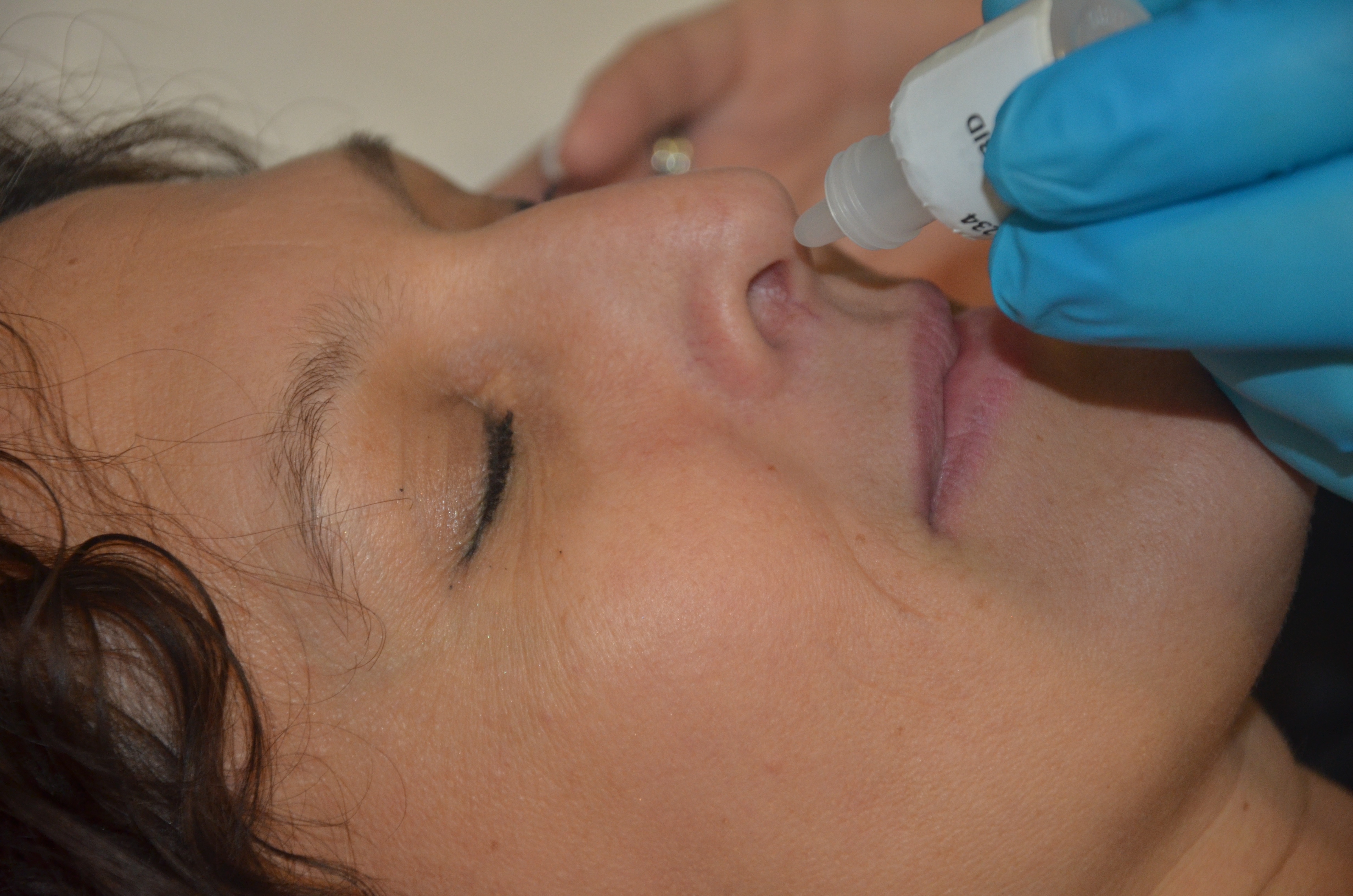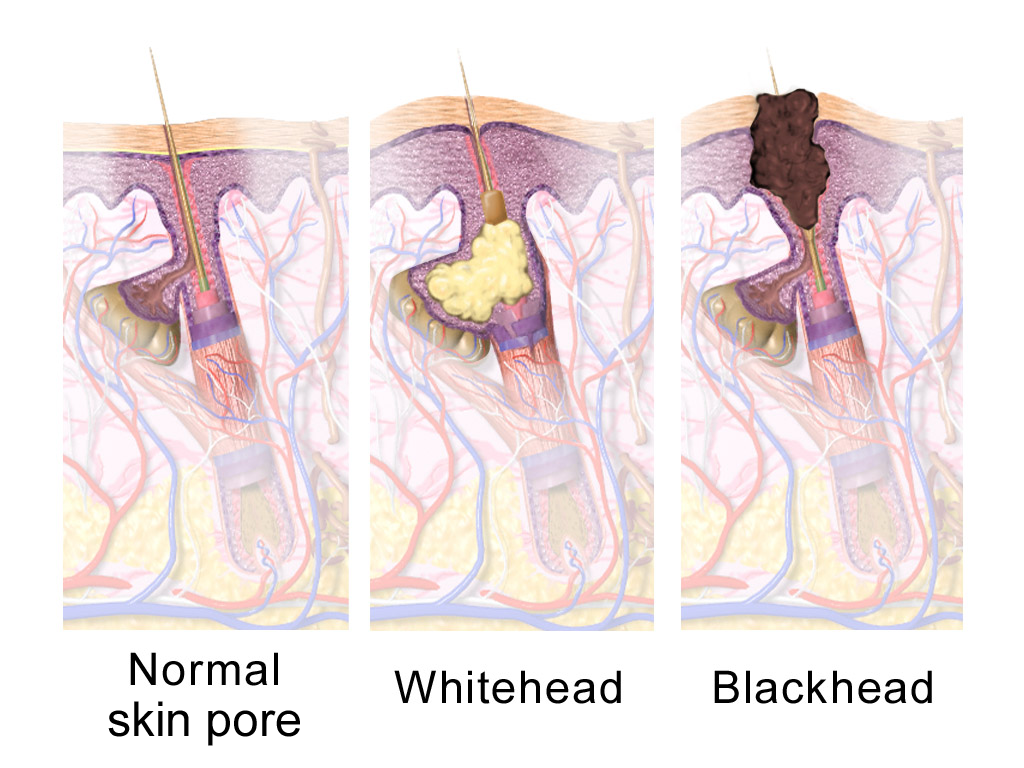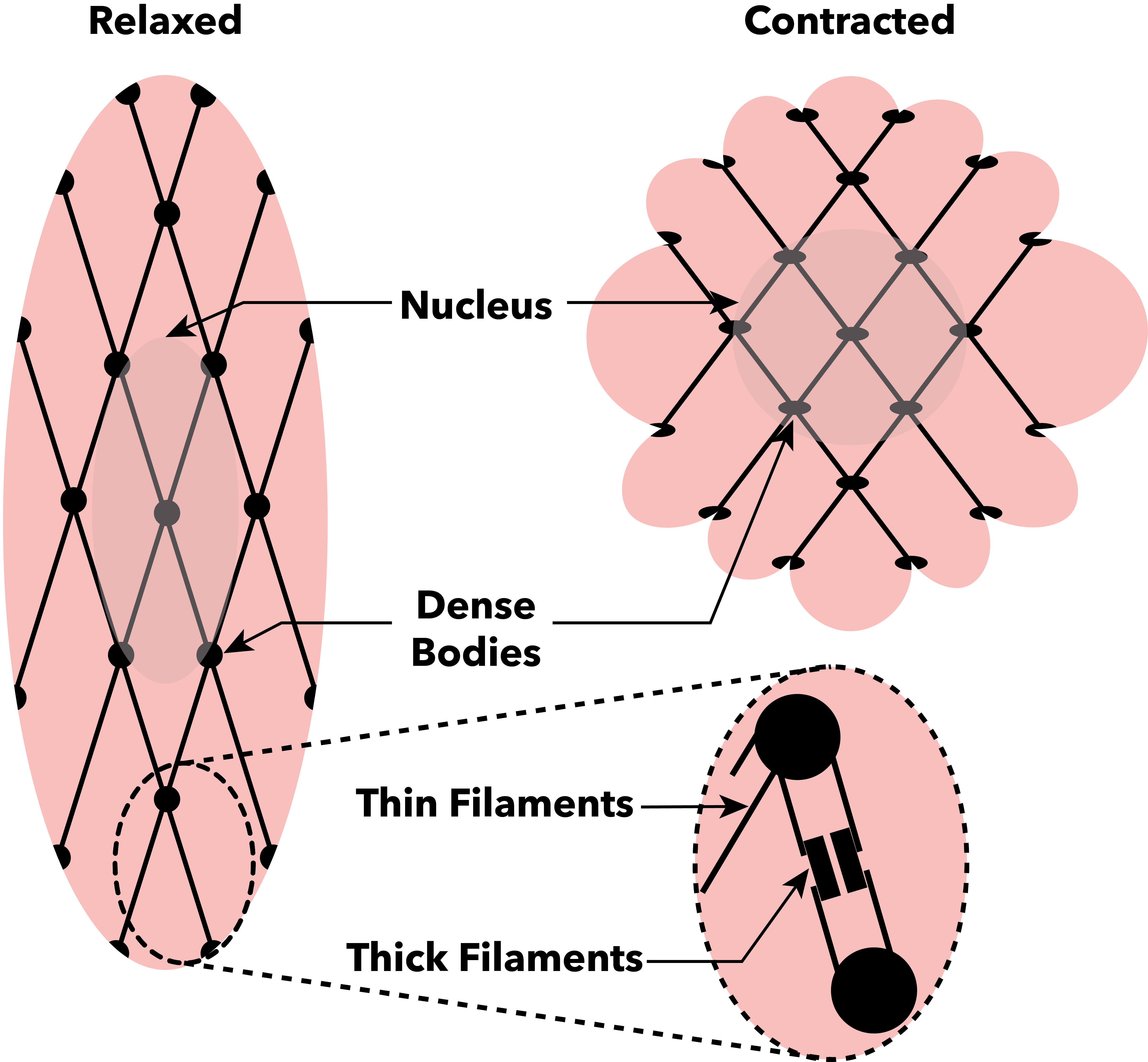|
Revolution (pet Medicine)
Selamectin, sold under the brand name Revolution, among others, is a topical parasiticide and anthelminthic used on dogs and cats. It treats and prevents infections of heartworms, fleas, ear mites, sarcoptic mange (scabies), and certain types of ticks in dogs, and prevents heartworms, fleas, ear mites, hookworms, and roundworms in cats. It is structurally related to ivermectin and milbemycin. Selamectin is not approved for human use. Veterinary uses Selamectin is applied topically. It is not miscible in water. Mode of action Selamectin disables parasites by activating glutamate-gated chloride channels at muscle synapses. Selamectin activates the chloride channel without desensitization, allowing chloride ions to enter the nerve cells and causing neuromuscular paralysis, impaired muscular contraction, and eventual death. The substance fights both internal and surface parasitic infection. Absorbed into the body through the skin and hair follicles, it travels through the blood ... [...More Info...] [...Related Items...] OR: [Wikipedia] [Google] [Baidu] |
Topical Administration
A topical medication is a medication that is applied to a particular place on or in the body. Most often topical medication means application to body surfaces such as the skin or mucous membranes to treat ailments via a large range of classes including creams, foams, gels, lotions, and ointments. Many topical medications are epicutaneous, meaning that they are applied directly to the skin. Topical medications may also be inhalational, such as asthma medications, or applied to the surface of tissues other than the skin, such as eye drops applied to the conjunctiva, or ear drops placed in the ear, or medications applied to the surface of a tooth. The word ''topical'' derives from Greek τοπικός ''topikos'', "of a place". Justification Topical drug delivery is a route of administering drugs via the skin to provide topical therapeutic effects. As skin is one of the largest and most superficial organs in the human body, pharmacists utilise it to deliver various drugs. ... [...More Info...] [...Related Items...] OR: [Wikipedia] [Google] [Baidu] |
Muscle
Muscle is a soft tissue, one of the four basic types of animal tissue. There are three types of muscle tissue in vertebrates: skeletal muscle, cardiac muscle, and smooth muscle. Muscle tissue gives skeletal muscles the ability to muscle contraction, contract. Muscle tissue contains special Muscle contraction, contractile proteins called actin and myosin which interact to cause movement. Among many other muscle proteins, present are two regulatory proteins, troponin and tropomyosin. Muscle is formed during embryonic development, in a process known as myogenesis. Skeletal muscle tissue is striated consisting of elongated, multinucleate muscle cells called muscle fibers, and is responsible for movements of the body. Other tissues in skeletal muscle include tendons and perimysium. Smooth and cardiac muscle contract involuntarily, without conscious intervention. These muscle types may be activated both through the interaction of the central nervous system as well as by innervation ... [...More Info...] [...Related Items...] OR: [Wikipedia] [Google] [Baidu] |
Milbemycin Oxime
The milbemycins are a group of macrolides chemically related to the avermectins and were first isolated in 1972 from '' Streptomyces hygroscopicus''. They are used in veterinary medicine as antiparasitic agents against worms, ticks and fleas.The 2nd International Electronic Conference on Synthetic Organic Chemistry: Insecticides They also show insecticida Mechanism of action Milbemycins have a similar mechanism of action, but a longer half-life than the avermectins. They open |
Virbac
Virbac is a French company dedicated to animal health located in Carros, near Nice. It was founded in 1968 by veterinarian Pierre-Richard Dick. The company is the 6th the largest veterinarian pharmaceutical group with a turnover of 1,397 million euros in 2024 (62% companion animal and 38% food producing animal). The company is a limited company with a board Euronext Paris stock exchange - compartiment A and is part of the reference index: SBF 120, and eligible SRD, PEA and PEA-PME. History Virbac (acronym of virology and bacteriology) is a French company dedicated to animal health located in Carros, near Nice. It was founded in 1968 by veterinarian Pierre-Richard Dick. Since his death in 1992, his youngest daughter, Marie-Hélène Dick-Madelpuech, also a veterinary surgeon, has chaired the Board of Directors. Activities The company has 6,400 employees and is now present in over 100 countries with 35 sales subsidiaries. Its production is located in 10 countries among which F ... [...More Info...] [...Related Items...] OR: [Wikipedia] [Google] [Baidu] |
Zoetis
Zoetis Inc. (/zō-EH-tis/) is an American drug company, the world's largest producer of medicine and vaccinations for pets and livestock. The company was a subsidiary of Pfizer, the world's largest drug maker, but with Pfizer's spinoff of its 83% interest in the firm it is now a completely independent company. The company directly markets its products in approximately 45 countries, and sells them in more than 100 countries. Operations outside the United States accounted for 50% of the total revenue. Contemporaneous with the spinoff in June 2013 S&P Dow Jones Indices announced that Zoetis would replace First Horizon National Corporation in the S&P 500 stock market index. History 1950s to 2000s In the 1950s, Pfizer began research on several drugs, including oxytetracycline, which was found to be effective in livestock. In 1952, the Pfizer Agriculture Division opened a 732-acre research and development facility in Terre Haute, Indiana, called Vigo. By 1988 the division was ... [...More Info...] [...Related Items...] OR: [Wikipedia] [Google] [Baidu] |
Norbrook Group
Norbrook is a United Kingdom-based pharmaceutical company. It was founded in 1969 by Lord Ballyedmond as Norbrook Laboratories Ltd in Northern Ireland. In 1970, Norbrook began manufacturing of veterinary pharmaceuticals. In 2011 the Norbrook Group was listed by the Belfast Telegraph in its Top 100 Companies list as being in position 28. Norbrook manufactures several pharmaceutical drugs, the best-known of which are the antibiotic drugs Noroclav and Betamox, NSAIDs such as Carprieve, Loxicom and Flunixin. Veterinary products *Closamectin – Closamectin is a pioneer drug developed by Norbrook for the treatment of fluke, worms and other external parasites. *Carprieve – A nonsteroidal anti-inflammatory drug (NSAID) for the treatment of osteoarthritis in dogs. *Loxicom oral Suspension – A nonsteroidal anti-inflammatory drug (NSAID) for the treatment of pain in cats and dogs. *Loxicom Injectable – A nonsteroidal anti-inflammatory drug (NSAID) for the treatment of pain in ca ... [...More Info...] [...Related Items...] OR: [Wikipedia] [Google] [Baidu] |
Krka (company)
Krka, d. d., Novo mesto is an international generic pharmaceutical company with headquarters in Novo Mesto, Slovenia. In 2023, Krka Group's total sales amounted to 1.806 billion euros. The net profit of the Krka Group totalled €313.7 million. Krka sells products to more than 70 countries. In Slovenia the company has production sites in Ločna and Bršljin (both in Novo Mesto), Krško, Šentjernej and Ljutomer; several departments are spread across various parts of Ljubljana as well. Krka also has production and distribution centers in Russia, Poland, Croatia, and Germany. At the end of 2023, Krka Group had 12,753 employees. Activities and products Krka's business is founded on pharmaceutical and chemical activities. Prescription pharmaceuticals remain its main product group, with an 81.7% share of Krka Group's total sales in 2023. They are followed in sales volume by non-prescription products (9.9%) and animal health products (5.8%). Krka produces a wide range of prescrip ... [...More Info...] [...Related Items...] OR: [Wikipedia] [Google] [Baidu] |
Adverse Effect
An adverse effect is an undesired harmful effect resulting from a medication or other intervention, such as surgery. An adverse effect may be termed a "side effect", when judged to be secondary to a main or therapeutic effect. The term complication is similar to adverse effect, but the latter is typically used in pharmacological contexts, or when the negative effect is expected or common. If the negative effect results from an unsuitable or incorrect dosage or procedure, this is called a medical error and not an adverse effect. Adverse effects are sometimes referred to as " iatrogenic" because they are generated by a physician/treatment. Some adverse effects occur only when starting, increasing or discontinuing a treatment. Using a drug or other medical intervention which is contraindicated may increase the risk of adverse effects. Adverse effects may cause complications of a disease or procedure and negatively affect its prognosis. They may also lead to non-compliance wi ... [...More Info...] [...Related Items...] OR: [Wikipedia] [Google] [Baidu] |
Sebaceous Glands
A sebaceous gland or oil gland is a microscopic exocrine gland in the skin that opens into a hair follicle to secrete an oily or waxy matter, called sebum, which lubricates the hair and skin of mammals. In humans, sebaceous glands occur in the greatest number on the face and scalp, but also on all parts of the skin except the palms of the hands and soles of the feet. In the eyelids, meibomian glands, also called tarsal glands, are a type of sebaceous gland that secrete a special type of sebum into tears. Surrounding the female nipples, areolar glands are specialized sebaceous glands for lubricating the nipples. Fordyce spots are benign, visible, sebaceous glands found usually on the lips, gums and inner cheeks, and genitals. Structure Location In humans, sebaceous glands are found throughout all areas of the skin, except the palms of the hands and soles of the feet. There are two types of sebaceous glands: those connected to hair follicles and those that exist indepen ... [...More Info...] [...Related Items...] OR: [Wikipedia] [Google] [Baidu] |
Hair Follicles
The hair follicle is an organ found in mammalian skin. It resides in the dermal layer of the skin and is made up of 20 different cell types, each with distinct functions. The hair follicle regulates hair growth via a complex interaction between hormones, neuropeptides, and immune cells. This complex interaction induces the hair follicle to produce different types of hair as seen on different parts of the body. For example, terminal hairs grow on the scalp and lanugo hairs are seen covering the bodies of fetuses in the uterus and in some newborn babies. The process of hair growth occurs in distinct sequential stages: ''anagen'' is the active growth phase, ''catagen'' is the regression of the hair follicle phase, ''telogen'' is the resting stage, ''exogen'' is the active shedding of hair phase and ''kenogen'' is the phase between the empty hair follicle and the growth of new hair. The function of hair in humans has long been a subject of interest and continues to be an important top ... [...More Info...] [...Related Items...] OR: [Wikipedia] [Google] [Baidu] |
Infection
An infection is the invasion of tissue (biology), tissues by pathogens, their multiplication, and the reaction of host (biology), host tissues to the infectious agent and the toxins they produce. An infectious disease, also known as a transmissible disease or communicable disease, is an Disease#Terminology, illness resulting from an infection. Infections can be caused by a wide range of pathogens, most prominently pathogenic bacteria, bacteria and viruses. Hosts can fight infections using their immune systems. Mammalian hosts react to infections with an Innate immune system, innate response, often involving inflammation, followed by an Adaptive immune system, adaptive response. Treatment for infections depends on the type of pathogen involved. Common medications include: * Antibiotics for bacterial infections. * Antivirals for viral infections. * Antifungals for fungal infections. * Antiprotozoals for protozoan infections. * Antihelminthics for infections caused by parasi ... [...More Info...] [...Related Items...] OR: [Wikipedia] [Google] [Baidu] |
Muscular Contraction
Muscle contraction is the activation of tension-generating sites within muscle cells. In physiology, muscle contraction does not necessarily mean muscle shortening because muscle tension can be produced without changes in muscle length, such as when holding something heavy in the same position. The termination of muscle contraction is followed by muscle relaxation, which is a return of the muscle fibers to their low tension-generating state. For the contractions to happen, the muscle cells must rely on the change in action of two types of filaments: thin and thick filaments. The major constituent of thin filaments is a chain formed by helical coiling of two strands of actin, and thick filaments dominantly consist of chains of the motor-protein myosin. Together, these two filaments form myofibrils - the basic functional organelles in the skeletal muscle system. In vertebrates, skeletal muscle contractions are neurogenic as they require synaptic input from motor neurons. A ... [...More Info...] [...Related Items...] OR: [Wikipedia] [Google] [Baidu] |





